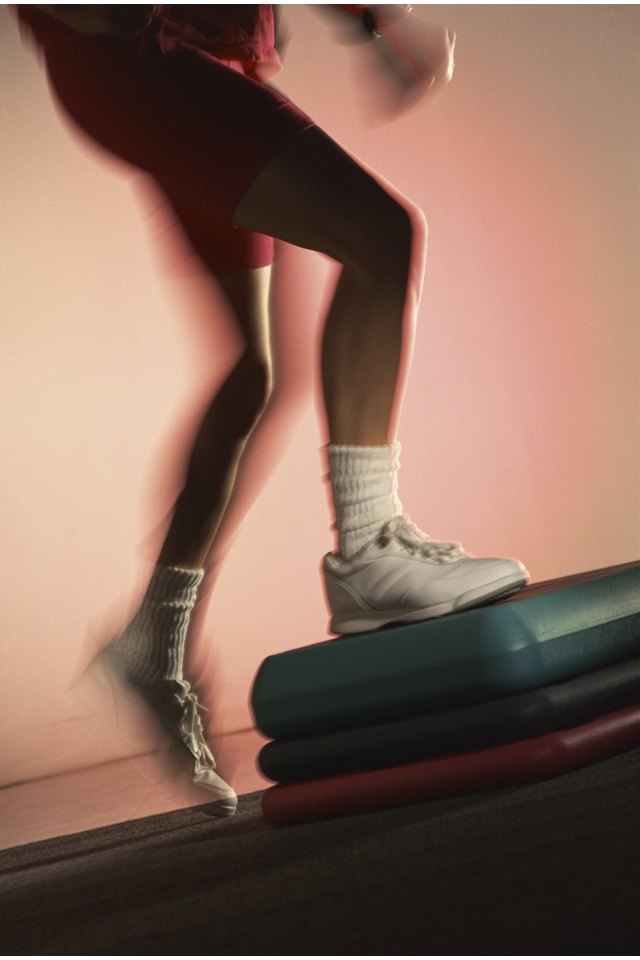The Joints & Muscles Used in Step-Ups

Step-ups target the gluteal muscles of your buttocks and the quadriceps muscles on the front of your thighs. Because the only equipment you need is a sturdy step or box, bodyweight step-ups can be done almost anywhere. You can also add to the challenge of this versatile exercise by using dumbbells or progressing to a higher step.
To perform a step-up: Standing, face a stable step, box or bench, lift one foot and place it on the platform. Step your other foot onto the platform, standing up fully. Step the second foot back down to the floor, then return the first foot to the floor. Repeat, starting with the opposite foot each time. Keep your spine as vertical as possible throughout the movement. When stepping on and off the platform, ensure that your knee always tracks in the direction of your toes.
Joints
The hips and knees are the major joints involved in step-ups. The exercise begins standing, a posture in which both joints are fully extended. As you step up with your first foot, your hip and knee joints flex. To stand up on the platform with the second foot, the hip and knee joints of the first leg extend. When you step the second leg down, that hip extends while the hip and knee joints of the first leg flex. As you return the starting position, the hip and knee of the lead leg extend.
Muscles
The primary muscles worked in step-ups are the gluteus maximus and the quadriceps. The gluteus maximus originates on your pelvis and sacrum. The muscle inserts into the back of the thigh bone as well into a band of tough connective tissue running down the outside of the leg, known as the iliotibial band. The gluteus maximus extends the hip joint. There are four quadriceps muscles. Three arise from the shaft of the thigh bone, while the fourth, called the rectus femoris, originates on the front of the pelvis. The tendons of all four cross the front of the knee joint to insert onto the shin bone. All four muscles extend the knee, while the rectus femoris also flexes the hip.
Modifications
You can vary which muscles are targeted by changing your distance from the step. Starting farther back will hit the gluteus maximus, while beginning closer to the step will work the quadriceps more. To increase the difficulty, use a higher step or box. To decrease the challenge, try a lower platform. You can also increase the resistance by performing the exercise with dumbbells. Hold the dumbbells in your hands by the side of your thighs with your palms facing in. To stretch your quadriceps in a standing position, pull one foot toward your buttock until you feel a stretch in the front of the thigh. Hold, then repeat with your other leg.
References
- ExRx.net: Step-Up
- ACE Exercise Library: Dumbbell Step-Up
- Anatomy of Movement; Blandine Calais-Germain
Writer Bio
This article was written by the CareerTrend team, copy edited and fact checked through a multi-point auditing system, in efforts to ensure our readers only receive the best information. To submit your questions or ideas, or to simply learn more about CareerTrend, contact us [here](http://careertrend.com/about-us).
